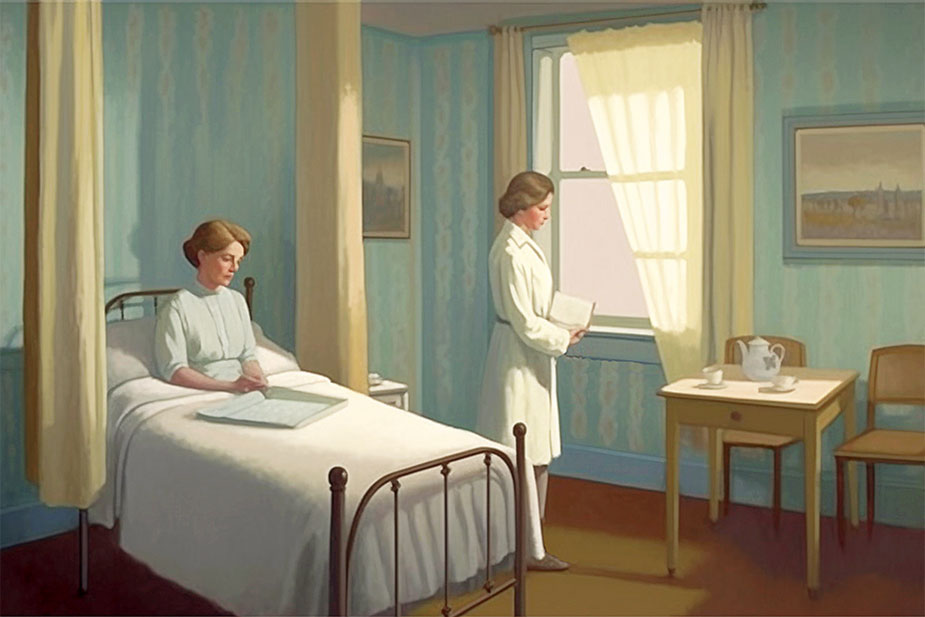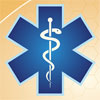The Role Of Hygiene In Medicine ~ Part II
 by Herbert M. Shelton
by Herbert M. Shelton
The conservatism of the ancient priesthoods preserved for ages the hygienic practices of an immemorable past. These normal factors of life continued to form vital and important elements of the care of the sick throughout that vast period during which the priestcraft held sway, and they continued to constitute a part of the mode of care during the early part of the evolution of leechcraft. Although both priest and leech taught man to rely upon artificial adventitious and harmful processes and substances, neither of them were able to completely divorce man from reliance upon his primitive requirements; indeed, the priests made no effort to do so. Neither the prayers and magic of the priest, nor the poisons of the physician could dispense with the normal needs of life. Western man made no attempt to abandon the primal mode of care of his body, in both health and illness, until a few centuries after the rise of the medical profession. The struggle between those who would rely upon drugs to restore health and those who would reject drugs and rely upon regulation of the ways of life, continued right down to the ushering in of that long night of intellectual darkness which we know as the Dark Ages.
Under the sway of anti-naturalism and super-naturalism, with its condemnation of the body and the “works of the flesh,” hygiene was neglected and the sanitary systems broke down. Europe degenerated into a continental pig stye. Epidemics and plagues abounded and a people who thought so much more of a hypothetical postmortem existence above the clouds than they did of life in this “lowly vale of tears” found their way to heaven in great numbers. Superstition took the place of learning, the people forgot to bathe. Compared to man in the Middle Ages, the life of the savage is a heavenly Paradise.
Despite strong resistance from the priestcraft, there came the revival of learning, but the sanitary measures of antiquity had been lost and hygiene had been forgotten. There was not an immediate revival in these realms. Medicine emerged triumphant from the long dark night of anti-naturalism. Its poisons were now recognized as the only means of restoring health and of “warding off disease.” Its methods of care grew more and more fantastic, its doses of poison became larger and larger until the day of heroic dosage dawned. Soon, even the people, although ignorant, sensed that they were being murdered by their physicians.
This was a time when patients suffering with high fever and parched with thirst, although crying for water, were denied by an ignorant and vicious school of medicine, this essential need of life. It was contrary to the teachings of the Allopathic school of medicine to give water, either inside or out, to a fever patient. Bathing was as dangerous as drink, but was dangerous to the healthy as well as to the sick. It was a time when medical men spread abroad the idea that it is injurious to keep the bedroom windows open. Fresh air, night air, cold air, damp air, and draughts were especially harmful. Hospitals were no more ventilated than they were kept clean. When the early hygienists asked: “Why is it that men can sleep upon the ground, in hog huts, tents, in outhouses, in the saddle, and all such places so at variance with Dr. Hall’s teaching, and yet enjoy rugged health,” they were met with scorn. This was a time when tubercular patients were placed deep in the earth in caves and were placed in cow stalls that they might inhale the effluvium that arises from the decaying manure, and were permitted to breathe the fumes from gas factories for the benefit of their diseased lungs. Journals published and edited by medical men declared that “sunshine must be inimical to health,” while they ignored the need for exercise even more than they do today. The time was ripe for the revival of Hygiene.
In Europe, under the leadership of Priessnitz and Schrodt, there was a revival of the use of water applications in the care of the sick. Under the leadership of Gutzmuth, Ling and Jahn, there came about a revival of physical culture and of manual manipulations of the body. Rikli revived sun bathing. Revived as Nature Cures, these methods came to America in the fifth decade of the last century and ultimately evolved into Naturopathy. The Nature Curists were eclectic and attempted to incorporate both diet and herbalism into their system, even, a little later, accepting homeopathy, which is a system of drugging, as is herbalism. The Nature Curists did give much attention to hygiene, although relying largely upon their treatments to restore the sick to health. Eclecticism always leads inevitably in one direction—towards greater complexity and confusion and away from any valid principle and into the bogs and swamps of empiricism.
The Hygienic System had a different origin and evolution. It seems appropriate that the revival of Hygiene should find its initial beginnings in ancient writings. If the Renaissance owed its initial beginnings to the reading of ancient Roman and Greek writings, what more natural than that the renaissance of Hygiene should originate in a similar manner? The ancients had practiced Hygiene; they wrote much about it and they incorporated it into their religions and into their sanitary codes. From this source a people, who had all but lost all knowledge of the pristine art of living, could find its way back to a sane way of life.
A group of people calling themselves Bible Christians migrated from England in the early part of the nineteenth century and settled in and around Philadelphia. These people had, as one of their cardinal beliefs, the thought that the eating of animal flesh was a violation of the first commandment God had given to man concerning his food. Accordingly, they abstained from all flesh, eggs, milk, honey, cheese, butter and other animal foods. They abstained from all alcoholics, tea, coffee, salt and all condiments. Their fare was a simple vegetable diet with only water to drink. Obviously, such a religion had scanty possibilities of growth among a people addicted to the wildest excesses and the wildest indulgences in the very things from which its devotees abstained.
But an epidemic of cholera developed in Philadelphia in 1830; there was a high incidence of the disease in the city, then but a small one, with a very high death rate. The Bible Christians nursed these cholera patients without one of them developing the disease or dying of it. It was the teaching of the medical profession at the time, that to avoid cholera, one must eat heavily of flesh foods and partake liberally of wine. These people who took neither flesh nor wine, escaped the disease, while the wine drinkers and flesh eaters sickened and died.
Sylvester Graham, a Presbyterian preacher, who had been engaged by the Pennsylvania Temperance Society to lecture in that state and who had been trained in physiology and anatomy, came in contact with these Bible Christians, just after this incident, and was impressed by their experiences. His first series of lectures on what became known as the Graham System, dealt with the cause, prevention and remedy of Asiatic cholera. He lectured extensively and wrote much on the new (but very old) system of living and acquired a large following. He strongly opposed the eating of white bread and advocated a return to whole wheat bread, this bread receiving his name—Graham bread. In his work, Graham went far beyond what the Bible Christians had done and included the whole of man’s way of life in his system.
Graham once remarked that “The time will come when people will make pilgrimages to my grave.” If we may accept it as a law of nature that work of merit will, in the end, win approval, Graham’s prophecy may yet come true, although the practice of making pilgrimages to graves has about gone out of fashion. It will be enough to fulfill this prophecy if we learn to give the man full credit for his genius and for the superlative value of his pioneering work. He held up a bright light and led the people through the darkness at a time when all was darkness and gloom. We of today owe a great debt to him that most of us do not recognize, for knowledge and practices now common. Even people who never heard of him are carrying out some of the things he advocated. His name has been hidden and his work belittled, but even his traducers are following in his footsteps.
In Connecticut, there lived a physician who had spent twenty years drugging his patients, with his faith in the drugging practice waning year by year. He broke with the drugging practice in 1822 and began a practice that was genuinely hygienic, but to which he added, as a means of securing the confidence of those who wanted drugs, bread pills, sugar pills and colored water. So successful was he that no other physician could gain a livelihood in his vicinity. Yale University conferred an honorary degree upon him in recognition of his remarkable success, although, at the time, the authorities at Yale were unaware of the fact that his success was due to the fact that Isaac Jennings had abandoned the poisoning practices and was relying on fasting, diet, rest, etc., as a means of restoring health to his patients.
In 1844 another physician, who, that year, settled in New York City, near the city hospital, having lost faith in drugs, and having investigated the Water Cure of Priessnitz, opened a water cure clinic, the first in America. He was so successful, although he received only the most desperate cases that flowed from the hospital, that he never again gave a drug so long as he lived. This man, Russell Thacker Trail, soon incorporated Grahamism into his practice. At the outset Jennings was no vegetarian, but he met and conversed with Graham and became one. Trail also became a vegetarian. These three men may be said to have fathered the Hygienic System, although they were joined by other men and women, such as William A. Alcott, Thomas Low Nichols, Mary Gove, James Caleb Jackson, George H. Taylor and others. The man who brought all the threads together and formed them into one system was Trail. He, also, was the one to adopt the name, the Hygienic System, and he founded the college of hygiene in New York in 1853. First a medical man, he became a hydropath and then evolved into a hygienist.
With the first faint glimmerings of truth there came the beginnings of the Hygienic System. As it is taught today, it is no empirical system, but is truly scientific. That is to say, it is founded upon the immutable laws of nature; its fundamental principles are as firmly established as the principles of any other science; they are plain, easy of comprehension and logically and experimentally proven. In thus declaring that the Hygienic System is scientific, we do not, thereby, commit ourselves to all of its opinions and practices. We know that, fundamentally, it is right and this is sufficient to enlist our heartiest sympathies and command our sincerest respect. It must succeed, because, possessed of a firm foundation, the superstructure will eventually be freed of all defects and superfluities and new elements will take the place of discarded ones, so that a noble edifice, one that will cheer the hearts of all lovers of truth, will stand as an enduring monument to its pioneers. Its principles being everlastingly true, the details will ultimately correspond, when it cannot fail to enlist the admiration and cooperation of all honest men.
Hygiene early became mixed with hydropathy and for years the two systems ran along together so intermingling that it is often difficult to determine into which category a practitioner is to be placed, although the men of the era differentiated between the two systems. Jennings and Alcott are, perhaps, the only Hygienic practitioners of the early period who did not include hydropathy in their practices. Graham was not a practitioner and while his writings contain no hydropathy, it is unfortunately true that he resorted to hydropathic care in his later years and there is every reason to think that this hastened his death.
It was fully recognized that hydropathy and hygiene were separate systems and it was not uncommon to have them say, “water and hygiene agencies,” thus distinguishing between hygiene and hydropathy. In 1850 Ronald S. Houghton, M.D., read a paper before the American Hygienic and Hydropathic Association under the title Hygiene and Hydropathy, in which he drew a distinct line between the two systems. The name of the Association was, itself, an indication of the distinction between the two systems.
A remarkable syngraphic efflorescence attended the rebirth of hygiene and guaranteed that it should reach the field in ways that its message could be understood. Numerous books were published that had wide distribution; numerous magazines were issued, some of them having but a brief life-span, others lasting for years. These periodicals reached great numbers of people in all walks of life and in all parts of the country. Just as hydropathy came to America, so hygiene went to Europe, where much of it found ready acceptance among the Nature Curists. Indeed, hygiene and Nature Cure had much in common and there is still a tendency among both laymen and practitioners to confuse the two systems.
In general, it may be said that the men who took the most active part in the Renaissance of hygiene worked out different principles, so that, while there was much overlapping, both of principles and practices, there were areas in which there were apparent differences and disagreements. A synthesis of these different principles and practices was needed but was not undertaken until well into the present century. Hygiene is not a syncretistic fusion, but a genuine synthesis. It is a correlation of related and mutually complemental principles giving a uniform and harmonious whole. A new synthesis does not consist merely in adding a number of factors together; it implies evolving a comprehensive mode of correlation whereby the several various factors are integrated into a unified whole. No genuine synthesis of factors can be achieved if these various factors do not normally and genuinely belong together. A forced synthesis will crack open at the seams under test. Any effort at syncretism that seeks to fuse hygiene with the antagonistic principles and practices of the schools of so-called healing must end in failure and disaster.
A reintegration of the elemental factors of hygiene must, of necessity, involve, not alone binding together in one unified whole, all of those principles and practices that normally belong to it, but also an elimination of all adventitious principles and practices that may have found their way into it. The mistakes of the past, as well as those of the present, must be weeded out to the end that a pure system of hygiene shall emerge. When Trail declared that the greatest room in the world is the room for improvement, he must have had some such forward move in mind, as he repeatedly emphasized to his students the fact that he and the other hygienists of his time could do little more than provide the broad outlines of hygiene and indicate the direction it should take. He stressed the fact that those who were to come after would have to fill in the details and push forward into new territory.
This was no doctrine of eclecticism. Neither Trail nor any of his hygienic contemporaries contemplated anything so impossible as that of “selecting the best” from the various systems of curing and tying them together in a bundle of heterogeneous but often antagonistic theories and opposite practices. Not to the systems, but to nature for further instructions, was their admonition. We control nature by obeying her, but we can only obey her when we understand her. Hence the study of nature forms the solid basis upon which further advances are to be made. We have not reached the limits of further development within the framework of our social equipment; further advance is not conditioned upon, although it may be accelerated by a new social synthesis. Indeed, it may well be that such a new social synthesis is essential to the fullest fruition of hygienic potentials.
Hygiene cannot accept any eclectic mishmash. The only eclecticism an honest man can practice is to select the good and reject the bad. Some drugs are worse than others, but they are all bad, and hygiene rejects them all, as not only useless, but as always and of necessity injurious. We may think that some of the elements of a valid hygiene, all of them normal elements of health, are better or more effective or more immediately beneficial than others, but they are all good and we employ all of them, both in sickness and in health, and make no compromises. On the same grounds, we are compelled to reject the enervating palliatives of the other schools of so-called healing.
The change from the lancet and poisons to hygiene was made by many physicians of the early period of modern hygiene, but it must be recorded that this tendency of physicians to desert the pills and powders, the green tinctures, red lotions, black draughts, shotgun mixtures, and the bleeding, blistering, narcotizing and stimulating practices of the time was strongly resisted by the profession as a whole. In spite of this resistance and in spite of the rank misrepresentation of hygiene by the profession, so many physicians deserted the profession for hygiene and the people turned to hygiene in such great numbers that the profession became frightened. Finally, to save itself, it went through the motions of adopting portions of hygiene. It was not, however, until 1906 that Harvard medical school offered a course in hygiene and, even then, the course was elective. Desertions of the “ethical” practice of medicine are no longer tolerated by a profession that has since become so tightly organized that it controls the individual practitioner as no religious order ever controlled its priesthood. Any physician who turns from drugs to hygiene today has his professional head taken off immediately.
The doctrines of the Hygienic System are new. Its philosophy has been before the world but little more than a century and a quarter and, although a few persons have studied its basis and mastered its fundamental premises, and many have obtained some general knowledge of its application, the great mass of the people really know very little about it.
The triumph of hygiene is inevitable. The collapse of medicine is equally inevitable. Whether we shall wander for forty years in the wilderness and the desert of medical superstitions and practices depends upon whether or not the people will recognize that their delusions all stem from the same source. Why shall we blindly adhere to a system of practice that was inherited from the grossest ignorance? Why cling to this relic of barbarism? We like to believe that truth will triumph in the end, but for the present, the profession has all the channels of information well sewed up so that they easily prevent the truth from reaching more than a small number of people. Hygiene has a mighty task ahead of it.
Excerpt from The Myth Of Medicine
See Part I here.
Part III coming soon.
Posted in Health, Other Topicswith comments disabled.





